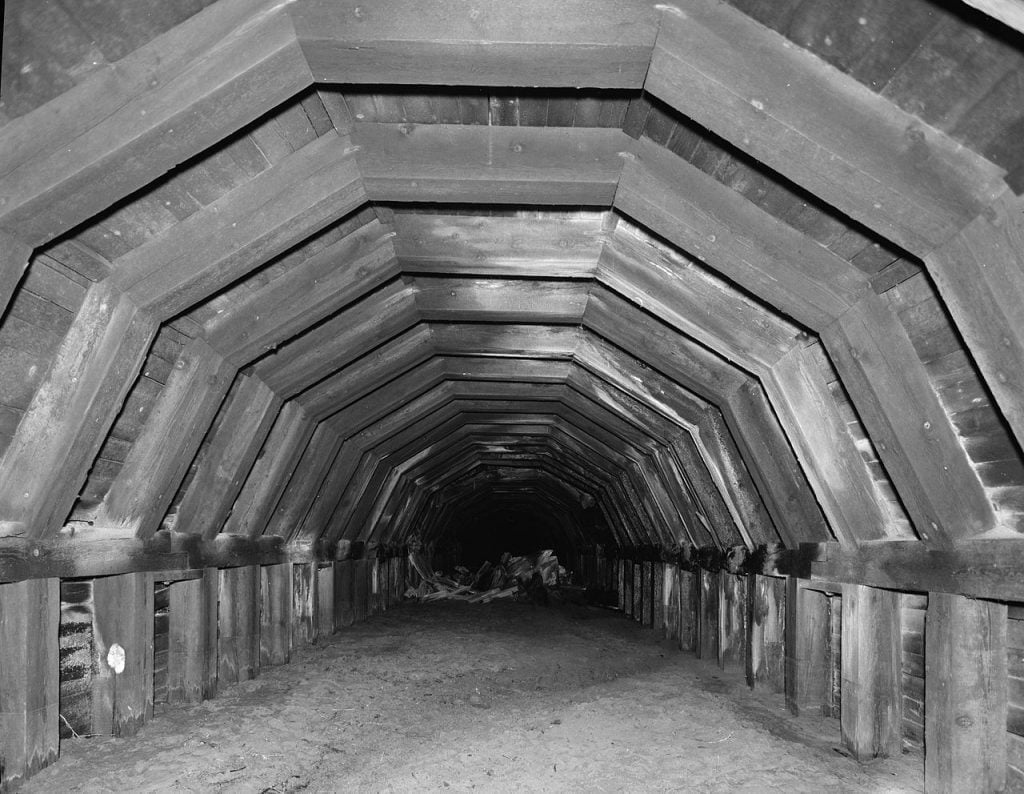The Most Haunted Locations in the US

In the spring of 1692, hysteria descended on the sleepy town of Salem, Massachusetts, spreading like an insidious virus. Over the course of several months, a group of young girls claiming to be possessed by the devil executed a number of men and women in one of history’s most infamous witch hunts.
Many of these troubled spirits are said to haunt Salem to this day, including Giles Corey, an 80-year-old farmer accused of witchcraft and crushed to death after publicly questioning the girls’ motives. The Howard Street Cemetery, where Corey is buried, is one of many places in the United States thought to be haunted.
But what is it that draws us to the supernatural? According to Margee Kerr, a sociologist and the author of Scream: Chilling Adventures in the Science of Fear, feeling terror when we know we’re safe can bring about a special kind of euphoria and confidence. And, as psychologist Christopher French explains in The Atlantic, some people see ghosts and spirits as proof that the soul can survive the death of the body.
Whether you believe in ghosts or not, these seven haunted locations demonstrate that haunting lore is frequently rooted in very real and traumatizing histories.
#1 The Shanghai Tunnels, Portland, Oregon

Portland, one of the most dangerous ports in the United States in the early nineteenth century, was the epicenter of shanghaiing, a form of human trafficking.
Swindlers preyed on unsuspecting men in the local saloons, which were often outfitted with trapdoors that dropped the victims directly into a network of underground tunnels, according to local legend. These men were allegedly held captive, drugged, and eventually transported to the waterfront, where they were sold as unpaid laborers to ships; some worked for several years before returning home. The tunnels are said to be haunted by the resentful spirits of the captives who died beneath the city.
#2 The LaLaurie Mansion, New Orleans, Louisiana

During the early nineteenth century, Madame Marie Delphine LaLaurie was a Louisiana socialite known for hosting ritzy soirees in her lavish French Quarter mansion in New Orleans. Guests dined on fine food and champagne, blissfully unaware of the grisly scenes unfolding two stories above.
In 1834, when local police were called to a kitchen fire, they discovered the bodies of several horribly mutilated enslaved people in the attic. When the public discovered LaLaurie’s heinous secret, a mob stormed the house, forcing her to flee to France. People claimed to have heard the phantom screams of her victims spilling from the house in the dead of night soon after LaLaurie vanished from New Orleans.
#3 R.M.S. Queen Mary, Long Beach, California

From 1936 to 1967, this retired ocean liner sailed the Atlantic Ocean. The Queen Mary carried dignitaries and Hollywood celebrities during its first three years at sea, including General Dwight Eisenhower, Elizabeth Taylor, and Audrey Hepburn. Its days as a luxury ship, however, were brief, and in 1939 it was stripped of its amenities and reborn as the “Grey Ghost,” a World War II troopship. After the war, it was restored to its former glory and continued to sail the Atlantic for nearly two decades.
The Queen Mary sailed away on its final voyage on Halloween 1967, eventually docking in Long Beach, California, where it was laid to rest. The spirits of those who died aboard, including the young sailor crushed to death by a door in the engine room and a crew member murdered in cabin B340, are said to haunt the ship.
#4 Eastern State Penitentiary, Philadelphia

This ominous Gothic-style prison opened in Philadelphia in 1829 and was the first in the United States to use solitary confinement, a contentious practice. Prisoners were housed in stone cells with little human contact (hoods were placed over their heads anytime they were moved). Proponents of this system believed that solitude would lead to penitence and, eventually, rehabilitation. Critics, on the other hand, believed it incited emotional anguish comparable to physical torture. The so-called “Pennsylvania system” was replicated in several other states and in Europe.
It is believed that the ghosts of the inmates reclaimed the prison after it closed in 1971. Visitors claim to see their ghosts wandering the corridors and to hear mischievous whispers in abandoned cell blocks.
#5 The Stanley Hotel, Estes Park, Colorado

Stephen King’s best-selling novel turned horror film, The Shining, was inspired by a night spent in this hotel nestled in Colorado’s mountain wilderness. F.O. and Flora Stanley, a couple from Massachusetts, opened the remote resort in 1909 and reportedly never left.
Mrs. Stanley can be heard playing her Steinway piano in the music room at night, according to staff, and Mr. Stanley occasionally appears in photographs. Bags being unpacked, lights turning off and on, and echoes of children’s laughter heard in the hallways have also been reported. According to paranormal experts, the Stanley Hotel is one of the most active ghost sites in the country.
#6 Lizzie Borden Bed and Breakfast, Fall River, Massachusetts

Andrew and Abby Borden’s bodies were discovered bludgeoned beyond recognition in their home on August 4, 1892. Lizzie, their youngest daughter, is the prime suspect.
The Borden case was one of the first in America to be covered by the media. Despite increased public scrutiny and allegations that Lizzie had financial motives for the murder, she was acquitted due to a lack of physical evidence (and no one was ever charged for the murders). The Borden house has since been turned into a museum and bed-and-breakfast, where visitors can view gruesome photos of the crime scene and sleep in one of the allegedly haunted rooms.
#7 Trans-Allegheny Lunatic Asylum, Weston, West Virginia

This ominous asylum was built in 1858 and opened to patients in 1864. Richard Andrews, the architect, designed the massive structure to maximize sunlight and fresh air—it was hoped that the building itself would serve as a healing environment.
By the 1950s, the facility, which was built for 250 people, was housing 2,400 patients with illnesses ranging from alcoholism to epilepsy. Patients were physically restrained and frequently subjected to inhumane treatments like electroshock therapy and lobotomies. The facility was forced to close in 1994 after more than a century of operation due to reforms in mental health treatment and building deterioration.
Hundreds of patients died during the asylum’s tenure, and scores of visitors and ghost hunters have claimed to see their shadowy figures roaming the crumbling halls of Trans-Allegheny.


















